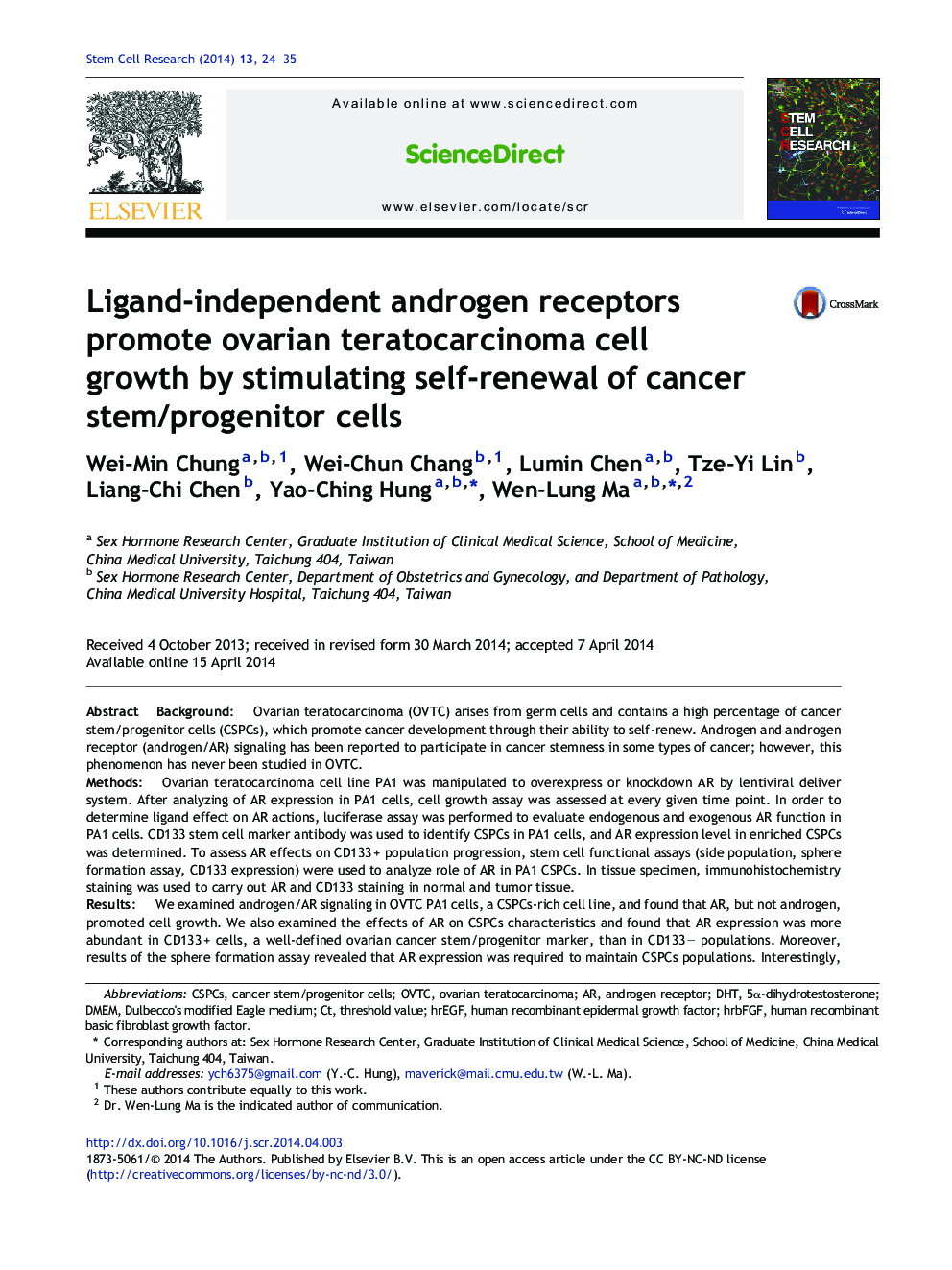| Article ID | Journal | Published Year | Pages | File Type |
|---|---|---|---|---|
| 2094261 | Stem Cell Research | 2014 | 12 Pages |
•AR promotes OVTC progression through facilitates cell growth and stemness.•Ligand-independent AR function is the major mechanism.•Overexpression of AR in CD133+ indicating a cancer stem promoter role.•Co-expression of AR and CD133 in human OVTC confirm hypothesis.
BackgroundOvarian teratocarcinoma (OVTC) arises from germ cells and contains a high percentage of cancer stem/progenitor cells (CSPCs), which promote cancer development through their ability to self-renew. Androgen and androgen receptor (androgen/AR) signaling has been reported to participate in cancer stemness in some types of cancer; however, this phenomenon has never been studied in OVTC.MethodsOvarian teratocarcinoma cell line PA1 was manipulated to overexpress or knockdown AR by lentiviral deliver system. After analyzing of AR expression in PA1 cells, cell growth assay was assessed at every given time point. In order to determine ligand effect on AR actions, luciferase assay was performed to evaluate endogenous and exogenous AR function in PA1 cells. CD133 stem cell marker antibody was used to identify CSPCs in PA1 cells, and AR expression level in enriched CSPCs was determined. To assess AR effects on CD133 + population progression, stem cell functional assays (side population, sphere formation assay, CD133 expression) were used to analyze role of AR in PA1 CSPCs. In tissue specimen, immunohistochemistry staining was used to carry out AR and CD133 staining in normal and tumor tissue.ResultsWe examined androgen/AR signaling in OVTC PA1 cells, a CSPCs-rich cell line, and found that AR, but not androgen, promoted cell growth. We also examined the effects of AR on CSPCs characteristics and found that AR expression was more abundant in CD133 + cells, a well-defined ovarian cancer stem/progenitor marker, than in CD133 − populations. Moreover, results of the sphere formation assay revealed that AR expression was required to maintain CSPCs populations. Interestingly, this AR-governed self-renewal capacity of CSPCs was only observed in CD133 + cells. In addition, we found that AR-mediated CSPCs enrichment was accompanied by down-regulation of p53 and p16. Finally, co-expression of AR and CD133 was more abundant in OVTC lesions than in normal ovarian tissue.ConclusionThe results of this study suggest that AR itself might play a ligand-independent role in the development of OVTC.
